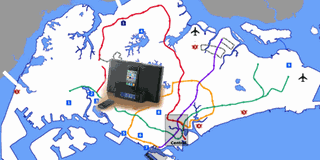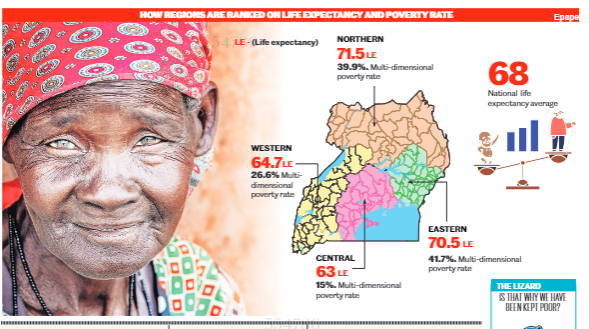Prime
Lesson to Learn: The Singapore economic miracle

Singapore largely depends on exports, a good chunk of which are electronics.
What you need to know:
In part two of our series, we look at Singapore, a country that was once a third world country in the 1960s and is now one of the world’s most prosperous countries. Singapore realised that their advantage was in electronics manufacturing and so they rallied everything around that, including education, training and skills building. Now the country boasts of being one of the Asian Tigers.
The figures from Singapore are simply mesmerising. It has the highest proportion of millionaires in the world – in a population of just five million people, one in every six households has more than $1m (Shs2.5b) in disposable assets. The country’s entire road network is paved (yes, paved. Uganda, did you hear that?). And an overwhelming 72 per cent of the country’s population has Internet access.
Looking at those figures, it is difficult to imagine that the Southeast Asian city-state was no economically different from many sub-Saharan African countries in the decade of independence that was the 1960s.
In 1968, Singapore’s economy was worth $1.4b while Uganda’s was worth $1.04b. They were both third world countries. Today, the two are far from peers. Singapore’s economy is worth $208.77b, while Uganda’s is worth less than a tenth of that, at $18b.
Of course, Singapore did not see the same kind of conflict as Uganda – but it is also a testimony that a country does not need the wealth of oil, gold or diamonds to grow rich. Rather, it shows just how important visionary leadership can be to a country’s future fortunes. The Asian Tiger was able to read the sails of international development, saw its potential role in the global economic puzzle, and then drove its schools to provide a workforce that would fit.
Attractive to investors
At the time of its independence from colonialism and subsequent separation from Malaysia in the 60s, Singapore’s economy was an import-driven one. And yet the average Singaporean did not have much money to buy goods, so Singapore’s leaders set their sights on building an export-based economy, which would in turn provide jobs for their people.
They began by attracting multinational companies (MNCs) from the West. Facing high labour costs back home, foreign investors were looking to take advantage of the wealth of cheap labour in countries like Singapore and China. Foreign Direct Investment (FDI) started flowing in right from when Prime Minister Lee Kuan Yew took over in 1965 and rose from $239m in 1966 to $6.4b in 1979.
Today, Bangladesh is trying to lure in much the same way, boasting cheaper rates for labour than its Asian counterparts. Yet Singapore to this day has no minimum wage policy. If the country wanted to employ as many youth and attract as many companies as possible, it could not dictate what the companies were to pay. In this day and age, Uganda cannot hope to take the same path. Experts at home warn against possible exploitation by foreign companies if labour rights are not checked, and points out how Singapore has allowed for that exploitation for years.
“Employees need to be protected, set a benchmark in terms of minimum wages,” says Richard Sebaggala, an Associate Research fellow at Policy Analysis and Development Research Institute (Padri).
“Investors are given so many incentives – what’s the point of getting so many of them if Ugandans do not immediately benefit? FDI must have a multiplier effect to citizens in a country.”
Spreading out the wealth
Once the FDI was booming, Singapore created industrial sites and business parks on state-owned land. The parks were designed to accommodate a specific type of industry in one place (say, chemical manufacturers in one park, and biological manufacturers in another), to become more efficient, which would ultimately expand into economies of scale.
According to the World Bank, after gazetting space for industries and businesses, Singapore followed with estates of cheap housing units adjacent to the business and industrial sites. This allowed labourers to live next to their work places, avoiding the congestion of long journeys to and from work.
Then, with the revenue from those industrial hubs, came the transport system. An array of well-tarmacked roads across the country was built, allowing business units to begin accessing each other and the city. Congestion in the city was avoided from the start through levying high dues on personal cars that enter the city, diverting the traffic to an advanced bus and rail system.
Beyond cheap labour into resources
Though Singapore did not have much natural given wealth to drive its goal of becoming an export economy, it made up for it by using its location to its benefit.
The island country is a gateway, ideally positioned on the Malay Peninsula as a convenient stop over on the Asian trade route. And so the country grew out of the Port of Singapore.
Uganda has no such ocean access. But Dr Fred Matovu, director at Padri, insists being landlocked does not entirely disadvantage us.
“We provide a sort of gateway to other countries farther inland like DRC, Rwanda, Burundi and South Sudan,” Matovu said. “What we need is to reconstruct our railway system, because it gives us cheaper access to the sea.”
Once, Uganda’s railway was seen as its connector to the world. But scores of workers died constructing that faltered line, and Uganda has not seen its benefits for a long while. There is however a plan to install a new railway line that will link Uganda to Tanzania. The railway line to Mombasa will also be repaired, and reinstate the line to Pakwach and Kasese. However there has been concern by environmentalists that the line from Tanzania could harm the ecosystem, especially the Serengeti National Park.
Adding value
The increase of MNCs operating in Singapore turned the country from a mere shipping hub to a leading Asian manufacturing centre, dealing especially in electronics and Information Technology. According to the World Bank, electronic manufacturing alone was worth $17.1m in 1960, and rose to $62.2b by 2001.
Uganda’s agro-based economy needs to start adding that kind of value in order to industrialise, experts say.
“Agriculture is where we have a niche. That’s where we can start from,” says Dr Matovu, “What we can export as Uganda is largely agricultural produce, but with value addition. You have to first get the product, add value, and then you can export to the world market to get better returns,” he says.
Mr Sebaggala says the government’s subsidies for farmers needs to be better coordinated, so that you do not for instance have a situation where a farmer is given seeds but they do not have the land to grow them.
Giving more weight to grassroots co-operative societies would allow farmers to have a stronger command of the market, and better access to credit and machinery like tractors, he said.
The role of education
If there was a question of the effect quality of education has on its fortunes, then Singapore is once again proof. So forward thinking were the leaders of Singapore that they realised just a few years after their independence in 1965, that in order to sustain investors in the country, its populace would have to be trained in vocational and technical works, to fan the flames of manufacturing.
In 1969, Singapore’s Ministry of Education announced that all secondary school pupils would receive two years of compulsory technical education. From there, a skilled labour force would be streamed into technical, commercial or academic education.
“Infrastructure and the training and education of workers to meet the needs of employers had to be planned years in advance,” Lee Kuan Yew, the country’s founding Prime Minister was quoted as saying in a World Bank report entitled “Toward a Better Future”.
This helped Singapore avoid Uganda’s current scenario, where most school graduates are under or unemployed because they studied disciplines that the economy could not accommodate.
What’s more, Singapore did not rest on its laurels as the days of labour-intensive technologies were becoming history over the course of the 1970s. MNCs did not want to employ as many people as before because one robot could now do the work of 10 or even more men, without the hassle of paying wages. And so Singapore continued to train those same workers and graduating them up the skilled ranks.
According to the World Bank report, one reason for Singapore’s economic success was its ability to balance the education system and the demand for skills.
Dr Matovu says technical skills remain very low in Uganda, with many graduate engineers and few hands-on technical workers – despite the policies promoting technical institutions having been there for years.
They come from as far back as the Kajubi Report White Paper on the education sector, which would inspire Universal Primary Education (UPE) in Uganda. But the government stopped short of adopting the more forward-looking aspects of that report – advocating for more technical institutions.
“It’s now an issue of implementation,” Dr Matovu says.
Uganda is now incorporating practical skills at more and more schools, and has begun advocating for the entrepreneurial approach. But there were actually more vibrant technical institutions in the past than they are now. Some have been closed, and the few secondary schools that taught some of these skills, have also stopped doing so.
But Mr Sebaggala says the government needs to equally address the cultural hangups of most parents, and the predetermined notion that only university education can lead a student to success.
But overall, Mr Sebaggala says it is the culture of corruption that has hindered actual implementation in Uganda for so long. An efficient system is one of the key areas that made Singapore ripe for business.
“If you want a service from an institution and it is not forth coming, you find you have to bribe someone to get it done. These bribes eat into your working capital and affect your business,” Dr Matovu says. “And this can turn away serious investors and business people.”
Fact file:
- Singapore was founded as a British trading colony in 1819, developing out of the shipping hub. It has risen from a near third world country four decades ago, to become one of the world’s most prosperous countries, counted among the Asian Tigers (Singapore, Taiwan, Hong Kong and Malaysia), countries that have had a similar grass to grace rise in economic fortunes.
- It is made of many Islands, sitting between Indonesia and Malaysia. Its size is 697square kilometres, thrice as big as Uganda.
- Its economy is dependent on exports of manufactured goods, especially consumer electronics, pharmaceuticals and information technology products.
- Its population is 5.3 million. Its entire populace lives in urban areas.
- Its HIV/Aids prevalence rate is 0.1 per cent.
- 99.78 per cent of the population is literate.
- Unemployment rate is at 5.9 per cent.
Data drafted from the World Bank and CIA.




